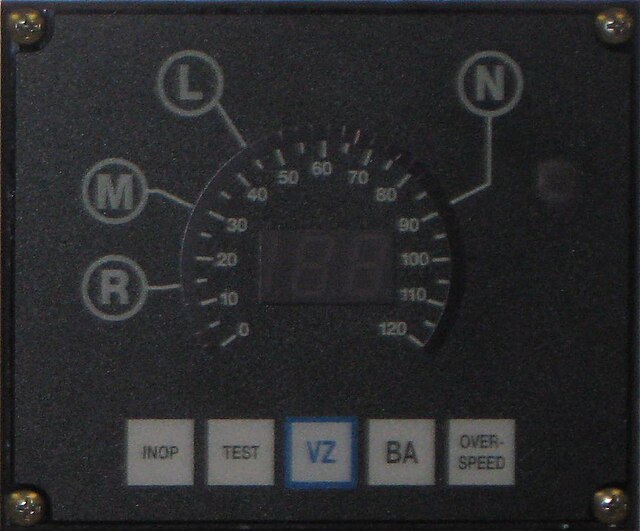Linienzugbeeinflussung is a cab signalling and train protection system used on selected German and Austrian railway lines as well as on the AVE and some commuter rail lines in Spain. The system was mandatory where trains were allowed to exceed speeds of 160 km/h (99 mph) in Germany and 220 km/h (140 mph) in Spain. It is also used on some slower railway and urban rapid transit lines to increase capacity. The German Linienzugbeeinflussung translates to continuous train control, literally: linear train influencing. It is also called linienförmige Zugbeeinflussung.
Track equipped with LZB loops. Notice the second cable on the lower part of the left rail.
Main console of an ICE 2 train in LZB mode. The current, the maximum and the target speed is 250 km/h. The target distance is 9.8 km
The Driver Machine Interface (DMI) panel of an ICE 4 train in LZB (STM) mode, showing a maximum target speed of 200 km/h
Cable loop
Cab signaling is a railway safety system that communicates track status and condition information to the cab, crew compartment or driver's compartment of a locomotive, railcar or multiple unit. The information is continually updated giving an easy to read display to the train driver or engine driver.
Cab signal display unit on a Chicago Transit Authority 'L' train. The vertical light bar in the middle of the signal indicates the maximum permitted speed for the section of track where the lead car is currently located.
CDU used on Metro-North is integrated with the speedometer indicating the train speed, and the signals indicate the speed limit.
Amtrak ACSES-capable cab signal display unit showing both a miniature signal and associated speed limit.







